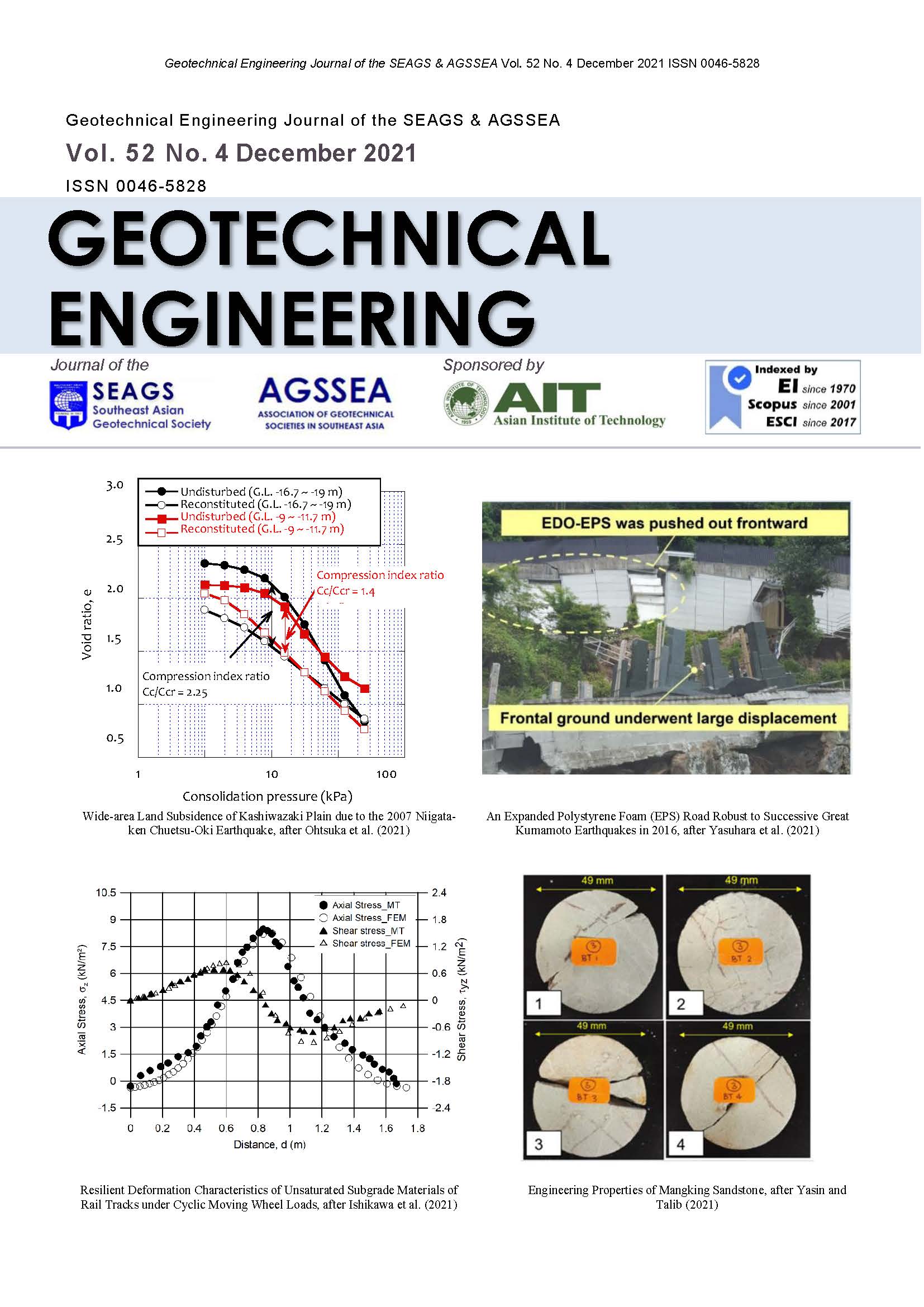An Expanded Polystyrene Foam (EPS) Road Robust to Successive Great Kumamoto Earthquakes in 2016
Main Article Content
Abstract
This paper describes a case in which no complete demolishment was observed in a geofoam (expanded polystyrene foam EPS) embankment. Used for local roads situated over active faults at a mountainous site in Mashiki Town, Kumamoto, Japan, the EPS withstood two successive strong earthquakes that struck Kumamoto and Oita prefectures in 2015. The EPS blocks of this EPS embankment were markedly shifted sideways both horizontally and vertically because earthquake-caused landslides occurred behind the EPS fills. Nevertheless, only a part of the EPS embankment collapsed, causing no damage to the temple nearby. Thereafter, the road surface was remediated temporarily immediately after the earthquakes and was maintained for the opening of traffic. This case demonstrates that EPS presents great benefits: most importantly, the partly collapsed EPS road was put into practical use as a temporary road supporting the daily life of local residents. This report describes an engineering perspective of why the road was not collapsed completely. Future issues to be considered by local governments and engineering institutions are explained for the preparation of great earthquake countermeasures.
Article Details

This work is licensed under a Creative Commons Attribution-NonCommercial-NoDerivatives 4.0 International License.
Copyright © 2019 Association of Geotechnical Societies in Southeast Asia (AGSSEA) - Southeast Asian Geotechnical Society (SEAGS).


